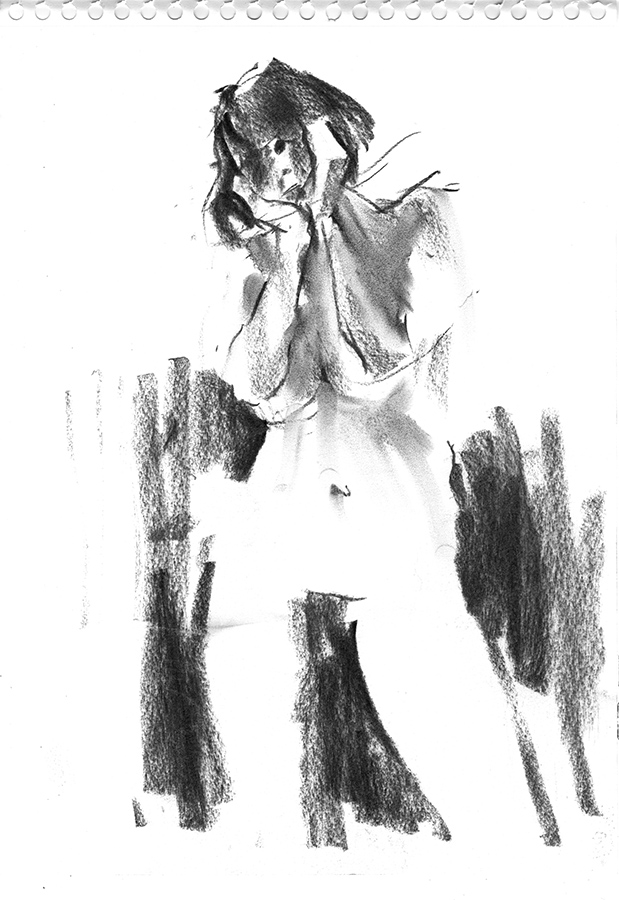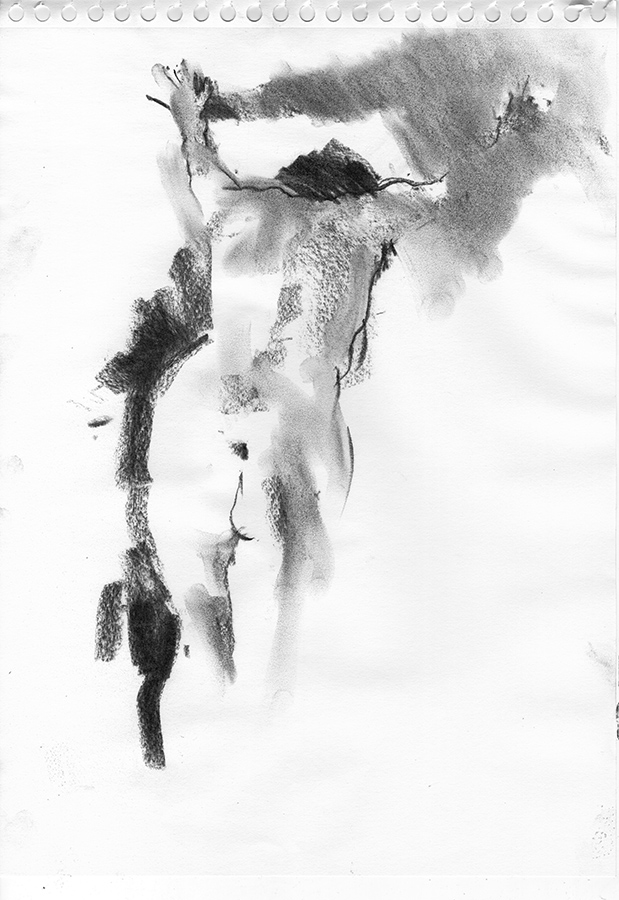Now I don’t like to get technical – painting should be a matter of passion and instinct – but there are certain things I think it’s good to be aware of when it comes to colour, so here’s my take on the basics which are HUE, CHROMA and VALUE.
HUE is just a description of the basic (saturated) colour plucked from a rainbow. Easy, eh?
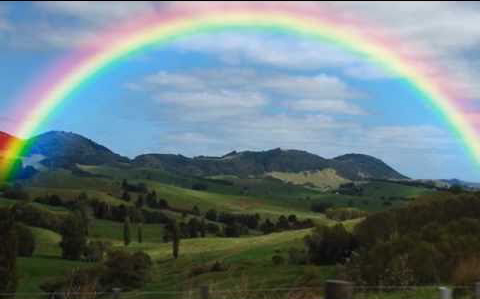
CHROMA is where it gets interesting. The colours we see around us are rarely rainbow intense. When I was a kid, I remember being taught colours – red, yellow, blue, orange… and I would go around the room trying to pick them out. I’m sure you did the same – everyone did. But do you remember having an uneasy awareness that the world didn’t generally conform to this simplified idea of colour and that they only really occurred in your toys, the red telephone and Mum’s dress?
We are, in fact, surrounded by colours we can’t easily describe and this is where chroma comes in, because nearly everything we see is greyed to some extent. The greyer, or more neutral, a colour is, the lower the chroma and it’s achieved by mixing ALL the primaries together in varying proportions, so to make a soft yellow, add a touch of purple. I always say the secret to a natural green is RED! So if your green is looking too intense (high chroma), try adding a little pigment containing red – maybe burnt sienna, or lilac. If you’re mixing a green from scratch, rather than using lemon yellow (yellow with a touch of blue) and pthalo blue (blue with a touch of yellow) try cobalt (blue with a hint of red) with yellow ochre for a VERY soft green.
VALUE for me is the king, sometimes described as TONE or TONAL VALUE. It is the lightness or darkness of the colour and is not related to the colour itself. For example, I have seen young students try to paint the sun using lots of intense yellow to make it bright, but value-wise it’s actually low on the scale. If you think in terms of colour washes, the paler the wash, the higher the value irrespective of what colour you’re using. So the brightest area of a painting could well be a neutral grey; don’t confuse brightness with chroma, as it’s very easy to do so. For example, a sky could be described as bright; that would be a high VALUE. We could also have a bright red car, but here we would be describing its CHROMA and a better word would be vivid. Don’t confuse the two – they are very different things. Language can be so confusing..
It’s the LIGHT that defines our environment more than anything else. Just think of an iconic photograph and the chances are that it’s in black and white.

Once you strip away the colour, all you have left is the light, and therein lies the drama! Here’s a very dramatic painting, containing the full value range from the deepest black to pure white.
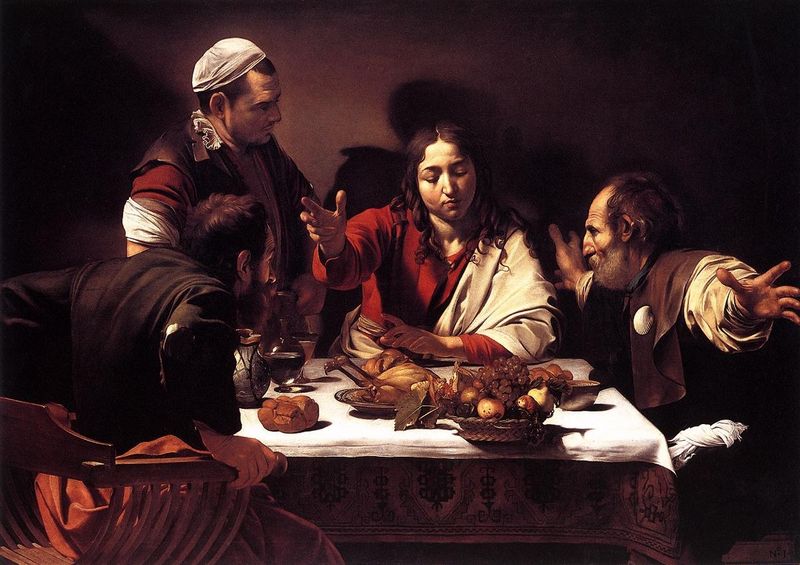
And here’s something altogether more gentle (by Joseph Zbukvic), where the values are predominantly mid-range and the variations very subtle:
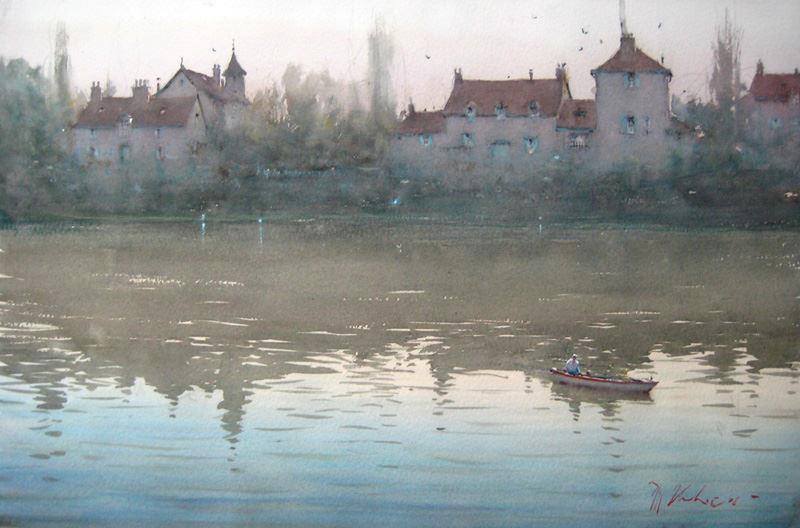
Two very different approaches and both equally valid. It’s all down to the values.
All very well, but how to put this into practice? I’m a simple soul and like to keep things a simple as possible. I’m sure you’ve seen dozens of books on colour mixing and a bewildering array of colour wheels; I’ve never used any of them. So confusing!

The very best thing you can do is PLAY! Play with colour combinations, play with pigments. Pick a triad of colours, reddish, blueish, yellowish, grab a piece of scrap paper and see how they work with each other. Here’s a couple of mine – a warm, earthy one and a cooler more vivid one; my take on colour wheels:
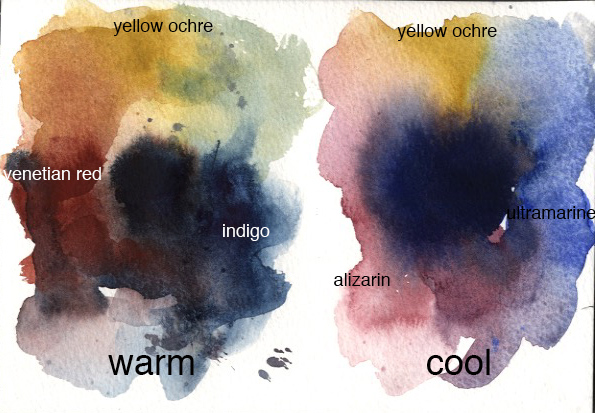
The blacks in the middle are a mix of the 3 colours in each case.
Personally, in the interests of keeping things simple, I think of pigments only in terms of primaries; this was my eureka moment. It all comes down to red, yellow, blue.
If you have a cheap printer, the inks will be magenta, cyan, yellow plus black to intensify the values, only because the printer can’t lay down the colours heavily enough to produce a deep black. So try to see the pigments in your palette as mixes of RYB; for example, I see Cobalt Blue as blue with a hint of red, Cadmium Red as a red with a touch of yellow and so on.
When it comes to choosing your pigments there is no magic combination; every artist’s palette is different, but they are all using red, yellow and blue in the end.
Experiment, play, have fun. The more you do, the better you get. So stop reading and get those paints out!


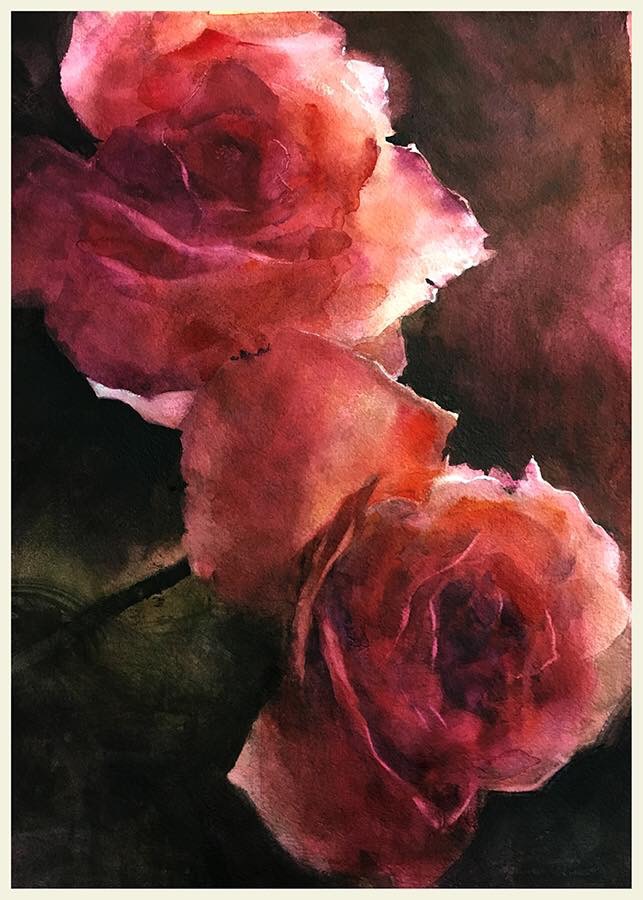
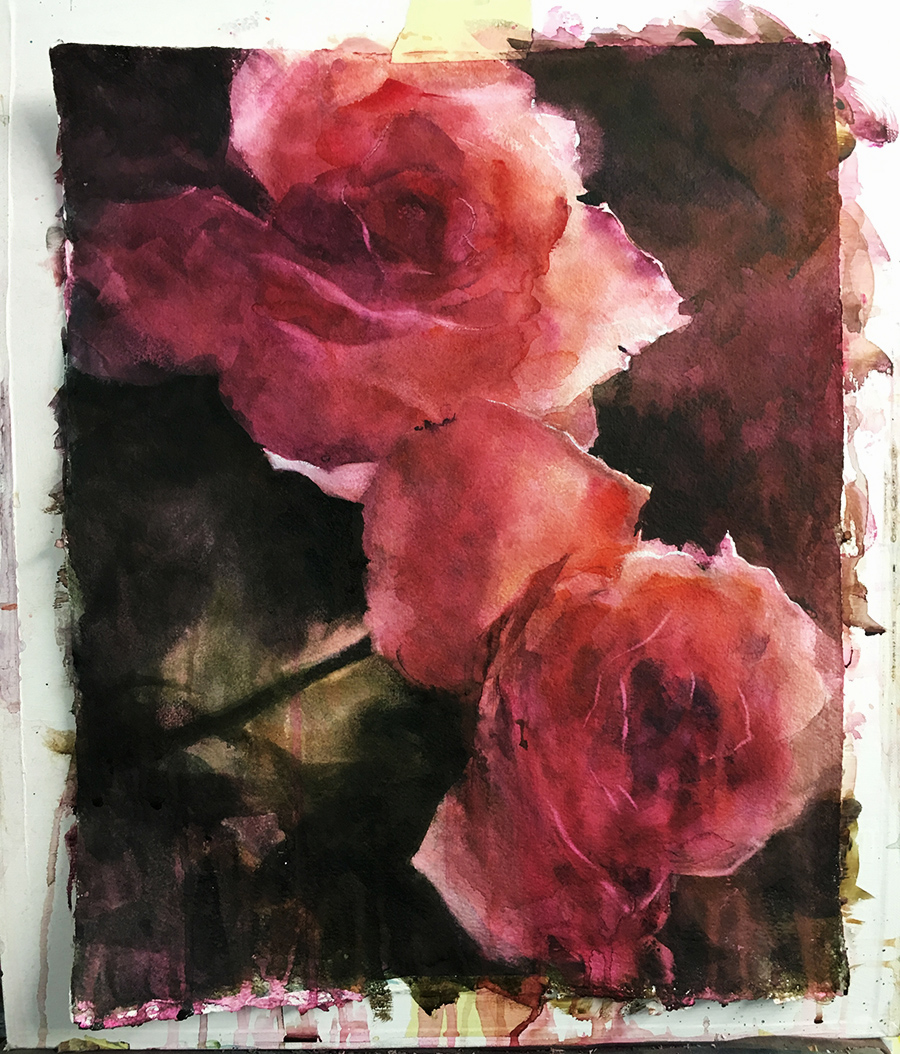
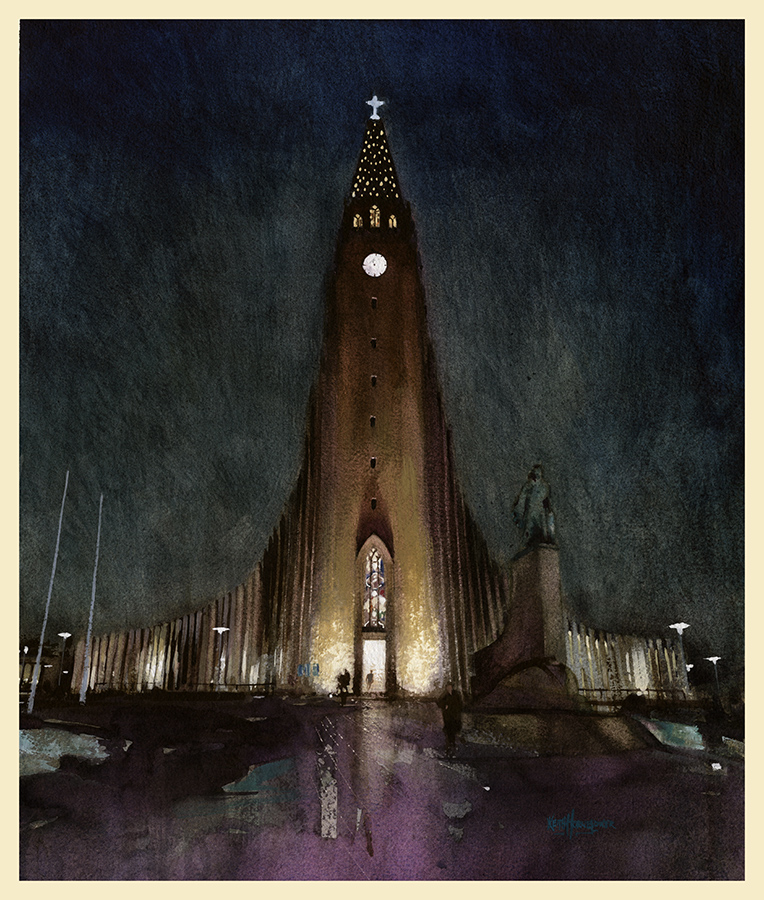
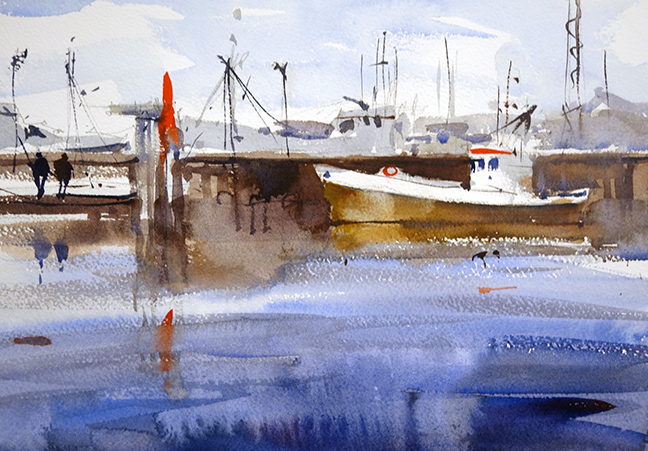
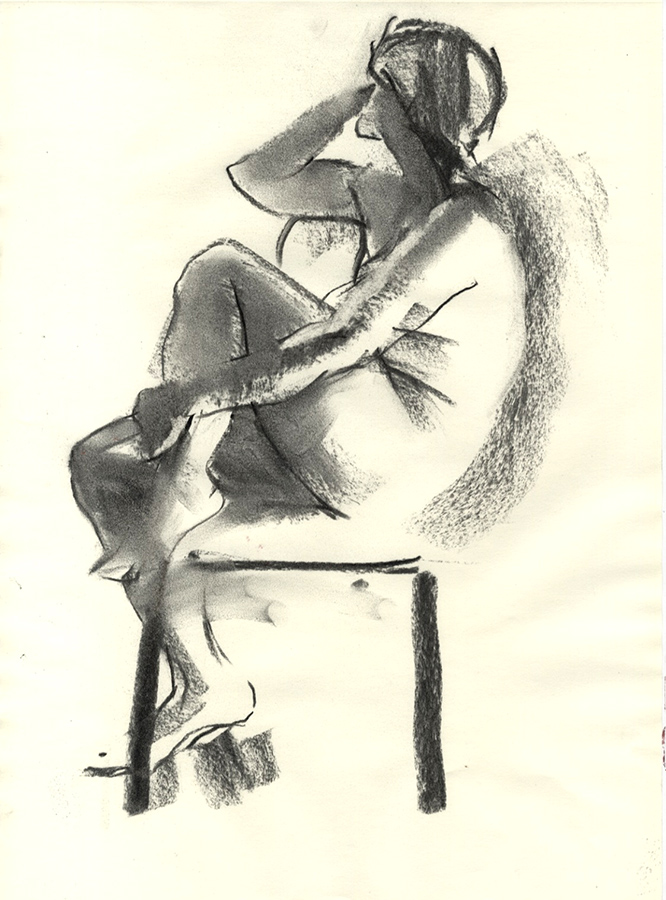
 Hands up; I am the world’s worst blogger. I put stuff on Facebook, forgetting that I can post it here and then share it on FB – a much better way to do things.
Hands up; I am the world’s worst blogger. I put stuff on Facebook, forgetting that I can post it here and then share it on FB – a much better way to do things.





